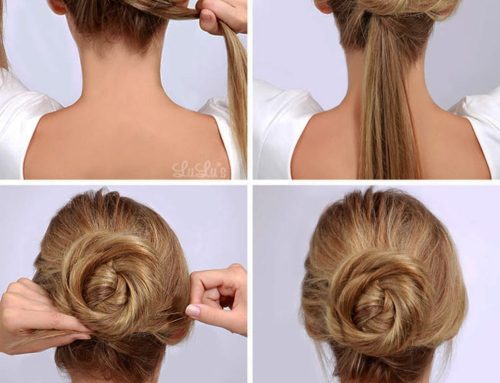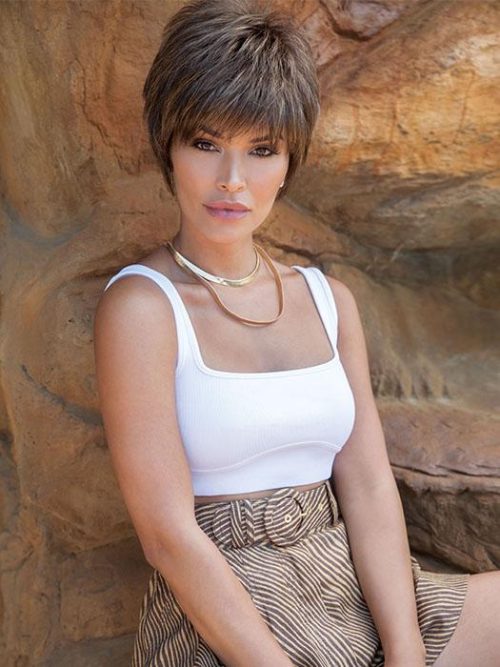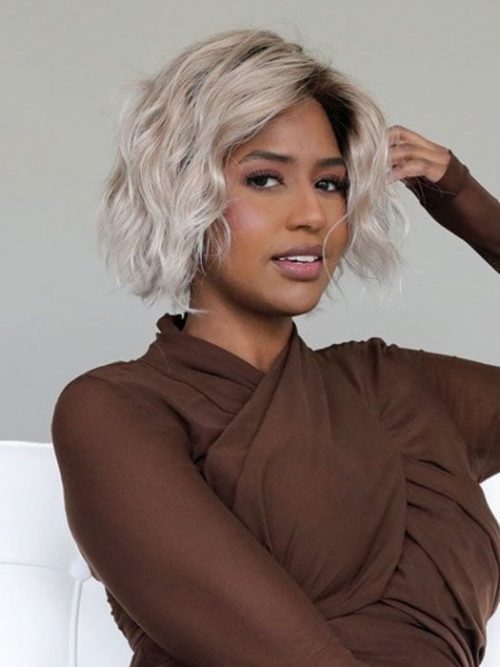Are Braids Bad for Your Hair? The Ultimate Guide to Healthy Braiding
Hey there, braid lovers! If you’ve ever rocked a set of braids—whether it’s sleek cornrows, chunky box braids, or those cute little French twists—you’ve probably wondered: Are braids bad for my hair? Maybe your bestie warned you about hair loss, or your cousin swears her edges thinned out after a tight style. It’s a question that pops up all the time, and honestly, there’s a lot of chatter out there—some true, some totally off-base. So, let’s dive in deep, spill some tea, and figure out what’s really going on with braids and your hair health. Spoiler: It’s not black-and-white, but I’ve got your back with all the juicy details, science-backed facts, and practical tips to keep your hair thriving.
The Big Picture: Are Braids Friend or Foe?
Braids are like that cool friend who’s super fun to hang out with but might get you in trouble if you’re not careful. They’re a go-to hairstyle for millions—low-maintenance, protective, and oh-so-stylish. But here’s the deal: braids can be amazing for your hair, or they can cause some serious drama, depending on how you wear them. The truth lies in the balance—too tight, too long, or too neglected, and your hair might send you an SOS. Done right? They’re a game-changer.
So, what’s the scoop? Braids can protect your hair from breakage, split ends, and harsh weather, but they can also lead to traction alopecia (hair loss from pulling) or scalp issues if you’re not on top of your game. Let’s break it down step-by-step and uncover the secrets most people don’t talk about—like that funky scalp smell or the weird itch no one admits to!
Why Do People Think Braids Are Bad?
You’ve probably heard the horror stories: “My braids made my hair fall out!” or “I had to cut my ends after taking them down!” These tales spread like wildfire, but are they the full picture? Let’s peek behind the curtain at why braids get a bad rap—and whether it’s deserved.
The Tension Trap
Tight braids are the number one suspect. When your scalp feels like it’s screaming during the braiding process, that’s a red flag. Too much tension pulls on your hair follicles (those tiny roots under your skin), and over time, it can weaken them or even make them give up entirely. This is called traction alopecia, and it’s more common than you’d think—especially around the edges.
- Science Says: A study from the Archives of Dermatology found that nearly 60% of African American women surveyed showed signs of hair loss from tight hairstyles like braids. The tighter the pull, the bigger the risk.
- Real Talk: Ever notice those little bumps or soreness after getting braids? That’s your scalp saying, “Chill out!”
Leaving Them in Too Long
Braids are low-maintenance, sure, but they’re not “set it and forget it.” Keeping them in past their prime—think longer than 6-8 weeks—can lead to matting, dryness, and even mildew (yep, like that damp towel smell). Your hair grows about half an inch a month, so after a while, those braids start tugging harder as new growth pushes in.
- Fun Fact: Some folks on X have complained about “yeast build-up” under braids. It’s not a myth—sweat, dirt, and moisture can turn your scalp into a petri dish if you’re not careful.
Skipping the TLC
Braids don’t mean you can ghost your hair care routine. If you’re not moisturizing your scalp or washing those braids, you’re asking for trouble—think flakiness, itchiness, or breakage when you finally take them down.
- Hidden Truth: A lot of people don’t realize that braids can trap dirt and oil, making your scalp a hot mess if you skip the upkeep.
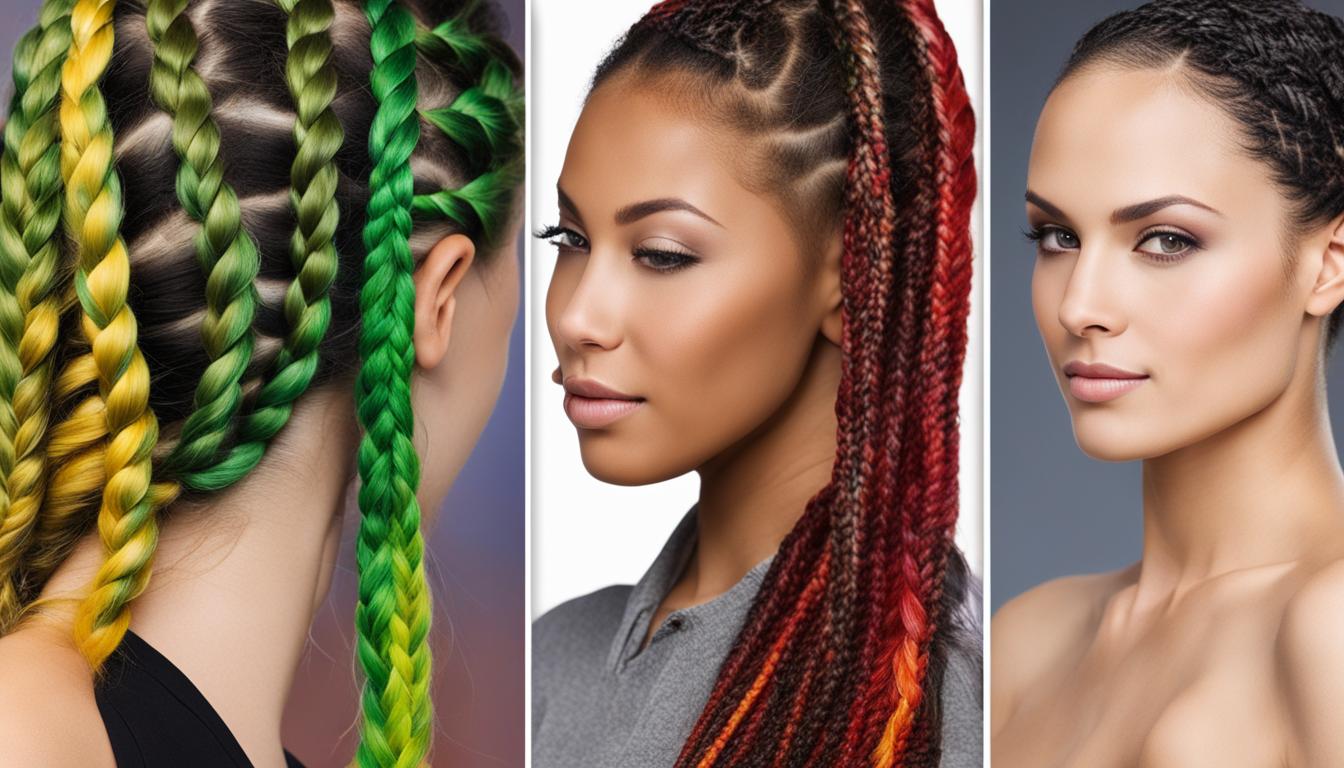
The Flip Side: Why Braids Can Be Your Hair’s BFF
Okay, let’s flip the script. Braids aren’t just about looking fly—they can actually help your hair in ways you might not expect. Here’s why they’ve been a staple for centuries (shoutout to ancient African cultures!) and why they’re still trending today.
Protection Mode: On
Braids tuck your ends away, shielding them from wind, sun, and that rough pillowcase you sleep on. Less friction = less breakage. For folks with curly or coily hair (like Type 3 or 4), this is huge because those strands are naturally more fragile.
- Example: Imagine your hair as a delicate sweater. Braids are like folding it neatly in a drawer instead of tossing it in a windy pile outside.
Growth Goals
Here’s a little secret: braids don’t make your hair grow faster (sorry, that’s a myth!), but they can help it grow longer by preventing breakage. When your ends aren’t snapping off, you keep more length over time.
- Expert Insight: “Braiding reduces manipulation, which is key for retaining length,” says Dr. Afiya Mbilishaka, a natural hair stylist and psychologist. Less combing, less heat, more growth—it adds up!
Low-Maintenance Vibes
Who doesn’t love waking up with their hair already done? Braids save you time and stress, especially if you’re juggling school, work, or just life. Plus, you can switch up the style—buns, ponytails, half-ups—without touching a curling iron.
- Fan Fave: Ever seen those TikTok vids of braid hacks? People are obsessed because it’s a hairstyle that works for you, not against you.
The Science of Braids: What’s Happening to Your Hair?
Let’s get nerdy for a sec. What’s actually going on under those braids? Your hair and scalp are doing some wild stuff, and understanding it can help you braid smarter.
Hair Follicles Under Pressure
Each strand of hair grows from a follicle—a tiny pocket in your scalp. When braids pull too hard, those follicles get stressed out. Over time, they might stop growing hair altogether, leading to thinning or bald spots.
- Latest Research: A 2023 study from the Journal of Cosmetic Dermatology showed that chronic tension from tight styles can cause inflammation around follicles, speeding up hair loss.
Scalp Health 101
Your scalp is like soil for your hair—keep it happy, and your strands thrive. Braids can trap sweat, oil, and bacteria if you don’t clean them, leading to itchiness or even infections like folliculitis (those annoying pus bumps).
- Quick Tip: Ever smelled something funky after weeks of braids? That’s your scalp begging for a wash!
Moisture Matters
Braids can lock in moisture if you prep right—think oils or leave-in conditioners. But if you skip this step, your hair dries out faster than a raisin in the sun. Dry hair = brittle hair = breakage city.
- Did You Know?: Sleeping with a silk scarf over your braids can trap moisture overnight. It’s a game-changer!
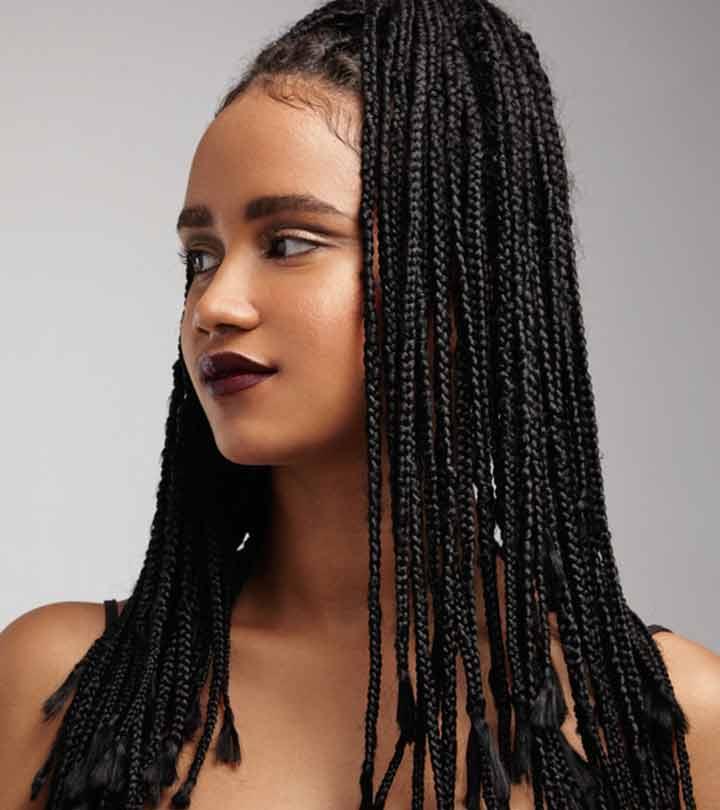
Braids Gone Wrong: Real Stories and Red Flags
Let’s get personal. I’ve talked to friends, scrolled through X, and dug into the vibes people are sharing. Here’s what happens when braids go from fab to flop—and how to spot trouble early.
The Edge Emergency
“My edges were GONE after box braids,” my friend Jasmine groaned. She’d gone for super-tight, skinny braids with heavy extensions. Two months later, her hairline was retreating faster than a scared cat. Lesson? Baby hairs are fragile—treat ‘em gently.
- Red Flag: If your edges feel tender or you see little hairs falling out, loosen up ASAP.
The Itch That Won’t Quit
Ever had that maddening itch a week into your braids? One X user posted, “I scratched so hard I messed up my cornrows!” That itch could mean buildup or dryness—both fixable with the right care.
- Fix It: Dab a cotton pad with witch hazel on your scalp. It’s soothing and fights bacteria.
The Takedown Disaster
Taking braids out can feel like a breakup—messy and emotional. If you’re yanking them out dry or without detangling, you’re snapping off more hair than you think. One girl I know lost chunks because she rushed it.
- Pro Tip: Patience is your friend. Use conditioner and work in sections.
How to Braid Like a Boss: Tips for Healthy Hair
Alright, now that we’ve covered the good, the bad, and the itchy, let’s talk strategy. Braids can be your hair’s superhero if you play it smart. Here’s your ultimate guide to slaying the braid game without the drama.
Step 1: Prep Your Hair Right
Before you even sit in that stylist’s chair (or braid your own), set the stage for success.
- ✔️ Wash and Condition: Start with a clean slate. Use a sulfate-free shampoo and a deep conditioner to hydrate your strands.
- ✔️ Detangle: Gently comb out knots with a wide-tooth comb. Wet hair with a little conditioner makes it easier.
- ❌ Don’t Skip This: Dirty or tangled hair under braids is a recipe for matting.
Step 2: Keep It Loose
Tight braids might look sleek, but they’re a silent killer for your scalp. Go for styles that feel comfy—not painful.
- ✔️ Test It: If you can’t wiggle your braids a little, they’re too tight.
- ✔️ Try Knotless: Knotless braids (no bulky knot at the root) are trending for a reason—they’re gentler.
- ❌ Avoid Overload: Heavy extensions add stress. Keep it light!
Step 3: Maintain Like a Pro
Braids need love too. Here’s your weekly checklist:
- Cleanse: Mix shampoo with water in a spray bottle, spritz your scalp, and massage gently. Rinse with a damp cloth.
- Moisturize: Use a lightweight oil (like jojoba or coconut) on your scalp and a leave-in spray for the braids.
- Protect at Night: Wrap your hair in a silk scarf or use a satin pillowcase to cut down on friction.
- Expert Tip: “Moisturizing your scalp is crucial to avoid flakiness,” says trichologist Dr. Apoorva Shah. Dryness is the enemy!
Step 4: Time It Right
Don’t overstay your welcome. Six weeks is the sweet spot for most styles—eight max if your hair grows slow.
- ✔️ Check Growth: If your roots look fuzzy or your braids feel tight, it’s time to take ‘em out.
- ❌ Don’t Push It: Longer than eight weeks risks matting and breakage.
Step 5: Take Down with Care
The takedown is where a lot of damage sneaks in. Here’s how to do it right:
- Soften: Spray your braids with water and conditioner to loosen them up.
- Section: Work in small chunks to avoid pulling.
- Detangle: Use your fingers or a wide-tooth comb as you go.
- Bonus: Add a protein treatment after to strengthen your strands.
Braid Styles Showdown: Which Ones Are Safest?
Not all braids are created equal. Some are gentler on your hair than others. Let’s compare the big players and see what’s up.
| Style | Tension Level | Maintenance | Hair Health Score | Best For |
|---|---|---|---|---|
| Box Braids | Medium-High | Low | 7/10 | Length retention |
| Cornrows | High | Medium | 6/10 | Sleek looks |
| Knotless Braids | Low-Medium | Low | 9/10 | Edge protection |
| French Braids | Low | High | 8/10 | Short-term styles |
| Crochet Braids | Medium | Low | 7/10 | Versatility |
- Winner: Knotless braids take the crown for being easy on your scalp and edges. Less pulling, more chill.
- Watch Out: Cornrows look dope but can be risky if they’re too tight or small.
The Sneaky Stuff No One Talks About
Alright, let’s spill some tea that doesn’t always make the headlines. These are the hush-hush braid secrets that can make or break your experience.
The Smell Situation
Ever caught a whiff of something funky a few weeks in? That’s buildup—sweat, oil, and maybe even a little mildew if you’ve been slacking on washing. It’s more common than people admit!
- Fix It: Spritz your scalp with a mix of water and tea tree oil. It’s antibacterial and smells fresh.
Synthetic Hair Risks
Love those long, colorful extensions? Some synthetic braids have chemicals like flame retardants that might irritate your scalp—or worse. A 2023 study from PMC flagged this as an under-the-radar health issue for Black women who braid often.
- Safer Bet: Go for high-quality synthetic or human hair, and air them out before braiding.
The Emotional Rollercoaster
Braids can mess with your head—literally and figuratively. Hair loss or damage can hit your confidence hard. “It’s not just hair; it’s identity,” Dr. Mbilishaka told me once. If your braids go wrong, it’s okay to feel bummed—but you can bounce back.
Braids Around the World: Culture Meets Care
Braids aren’t just a style—they’re a story. From ancient Egypt to modern-day Harlem, they’ve been about beauty, community, and survival. But how you care for them changes the game.
History Vibes
In Africa, braids mapped out tribes and status—think intricate cornrows with beads. Enslaved Africans used them to hide messages or food. Today, they’re a flex of creativity and pride.
- Cool Fact: Some styles, like Bantu knots, double as protection and art.
Modern Twists
Now, braids are global—K-pop stars rock them, celebs like Zendaya slay them on the red carpet. But the care tips stay universal: loose tension, regular moisture, and no overstaying.
- Trend Alert: Boho knotless braids with curly ends are hot in 2025—cute and scalp-friendly!
Busting Myths: What’s True, What’s Trash?
There’s so much noise out there about braids. Let’s clear the air with some myth-busting.
- Myth: “Braids make your hair grow faster.”
Truth: Nope, growth happens at the follicle—about half an inch a month, braided or not. Braids just help you keep that length. - Myth: “You don’t need to wash braids.”
Truth: Wrong! Skipping washes leads to buildup and breakage. Clean scalps = happy hair. - Myth: “Tight braids last longer.”
Truth: They might look neater longer, but they’re damaging your roots. Loose braids can still slay.
Your Braid Action Plan: A Week-by-Week Guide
Ready to braid without the stress? Here’s a 6-week plan to keep your hair healthy and your vibes high.
Week 1: Fresh Start
- Wash, condition, and braid with medium tension.
- Moisturize your scalp with oil right after.
Week 2-3: Maintenance Mode
- Wash your scalp every 7-10 days.
- Sleep with a silk scarf every night.
Week 4-5: Check-In
- Look for fuzz at the roots—time to plan your takedown.
- Keep moisturizing; don’t slack now!
Week 6: Take It Down
- Soften with conditioner, detangle gently, and treat your hair to a mask.
- Pro Tip: Snap a pic of your growth before and after. It’s motivating!
When to Say No to Braids
Braids aren’t for everyone all the time. Here’s when to hit pause:
- ✔️ Thin or Weak Hair: If your strands are brittle or shedding, braids might worsen it.
- ✔️ Scalp Issues: Eczema, psoriasis, or sores? Heal first, braid later.
- ❌ No Patience: If you won’t maintain them, skip it—neglect is the real villain.
The Future of Braiding: What’s Next?
Braiding’s evolving, fam. In 2025, we’re seeing lighter extensions, gentler techniques, and even braid-friendly products hitting shelves. Think shampoos made for braided scalps or oils that penetrate without greasing up your style.
- Hot Take: Smart braiders are mixing in natural fibers like bamboo to cut down on synthetic risks. Stay tuned!
Let’s Chat: Your Turn!
Braids are personal—what’s your story? Drop a comment below and tell me:
- What’s your go-to braid style?
- Ever had a braid fail? Spill the tea!
- Got a killer care tip I missed?
I’ll reply to every single one—let’s keep this convo going. Oh, and if you loved this deep dive, share it with your crew. Healthy hair is a team sport!
